How Visual Perceptual Skills Take Dyslexia to New Heights!
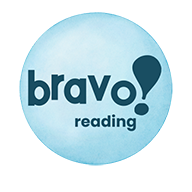

Dyslexia often involves more than just difficulty with reading. For instance, visual perceptual skills issues take the forefront in how kids with dyslexia process information. That’s why Bravo! Reading is happy to share the “Seeing” for Reading Pack, a visual perceptual skills program designed exclusively for kids with dyslexia.

The “Seeing” for Reading Pack is specifically designed to address the unique challenges faced by children with dyslexia. Visual perceptual skills are crucial for effective reading and learning, and many dyslexic students struggle with visual perception, tracking, and coordination.
By focusing on improving visual perceptual abilities, Bravo! Reading empowers dyslexic learners to overcome their reading difficulties, boost their confidence, and achieve their full potential.
The Bravo! “Seeing” for Reading Pack integrates engaging, multisensory techniques that make learning both effective and enjoyable for every child.
Did you know that 75 to 90% of what your child takes in is visual? This means that vision is your child’s primary learning sense. It also means that if your child has dyslexia or struggles with visual perceptual issues, then there’s most likely a problem with reading.
The visual information kids with dyslexia take in is often skewed, moving, upside down, diagonal, shaking, or a host of other distortions that interfere with learning – especially reading and spelling. This often results in a visual processing disorder.
Kids with Dyslexia Are Smarter Than You’d Think!
Of course, this doesn’t mean kids with dyslexia aren’t smart. One of the symptoms of dyslexia is average or above average intelligence. It does mean that it’s harder for kids with dyslexia struggle with visual processing skills because of these perceptual issues.
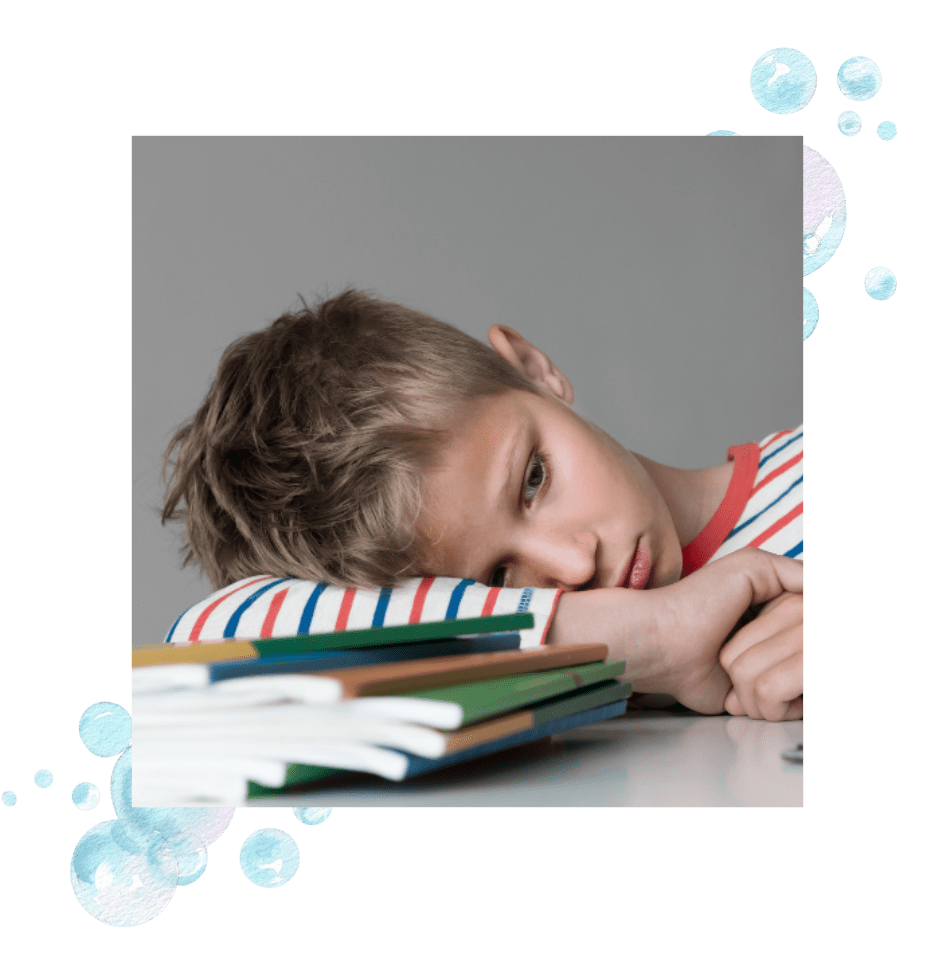
There are many different visual perceptual skills that directly affect your child’s ability to read and spell. Kids with dyslexia and visual processing disorders struggle to read because of this. They especially struggle with reversals, another example of skewed information coming in with a distorted output.
Here’s the good news. If your child has dyslexia or struggles to process visual perceptual information, then don’t fret. There are exercises available to help these visual perceptual processing problems.
For instance, a common visual perceptual skill that kids with dyslexia struggle with is visual discrimination.
In a nutshell, visual discrimination is the ability to determine subtle differences in symbols or objects that are seen. Since each letter of the alphabet is a symbol, it’s important that your child can tell the differences between letters.
For instance, it’s common to mistake an “n” for an “h”. The only difference is the longer line coming up from the “h”.

Dyslexia Is More Than Misreading Letters and Words
If your child misreads an “h” for an “n”, then the word is read wrong. Meaning is changed, which affects reading comprehension. The word is incorrect, and this causes a pause, which in turn, affects fluency in a negative way. Even worse, when your child is corrected or realizes the word was read incorrectly, then the flow of learning is disrupted. That slows everything down!
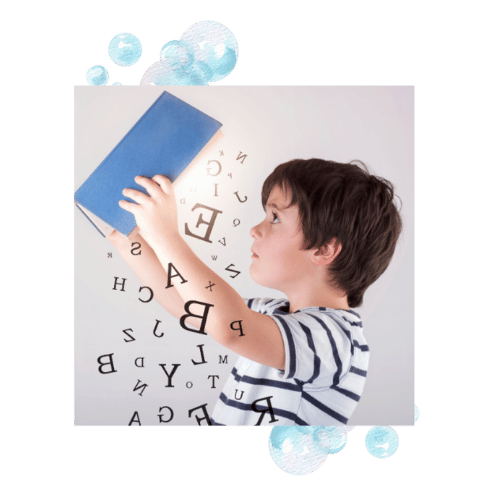
And we all know that reading is a quick, automatic process. That kids are expected to read with fluency and comprehension and that they are graded on these skills.
The Bravo! “Seeing” for Reading Pack gives your child the opportunity to strengthen pesky visual perceptual skills that can interfere with reading success. The exercises are fun, easy to do, and pack a punch of quick results. These visual therapy based exercises are designed with the dyslexic reader in mind – the very reader who struggles with visual processing skills.
When your child starts using the over 250 pages of visual perceptual activities in the “Seeing” for Reading Pack, visual processing skills start falling into place.
Why Kids With Dyslexia Fail At An Alarming Rate!
When kids with dyslexia attempt reading, they have a hard time. Usually they stammer and stutter, not able to decode the words correctly. From there, they panic, often resorting to bad habits like guessing at words.
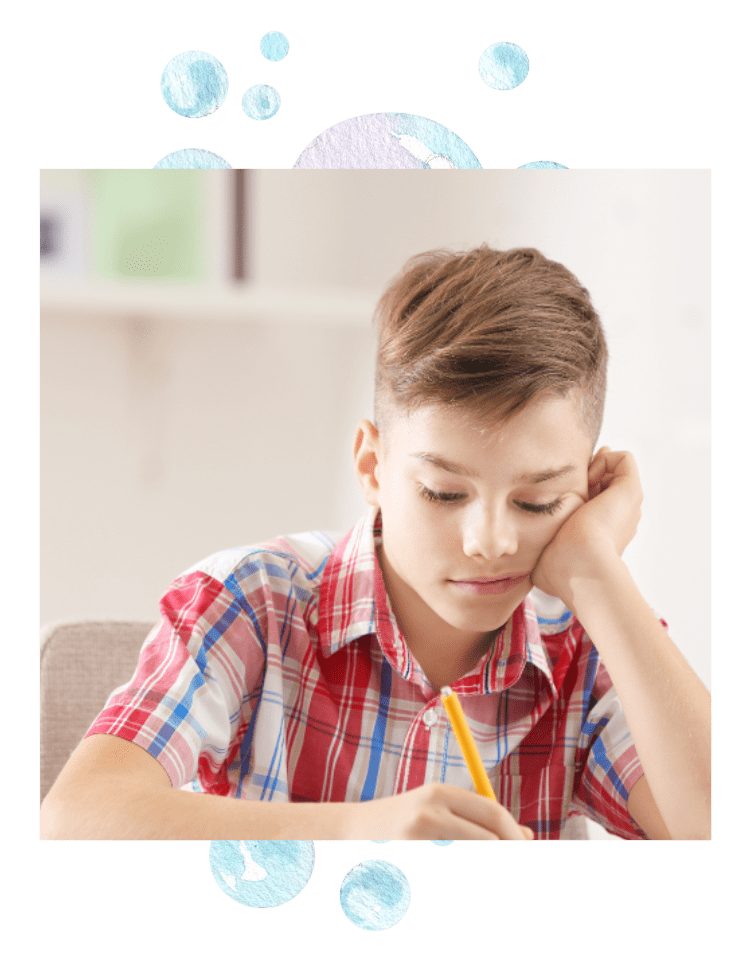
One reason for this is that it’s hard for kids with dyslexia to judge which letter is coming up next, which word. Seeing symbols correctly instead of in a “mish-mashed”, distorted way is a first step in helping your child read better.
With visual perceptual exercises geared toward specific reading skills, it’s even better.
Following is a list and explanation of the visual perceptual skills addressed in the “Seeing” for Reading Pack and an explanation of how these skills affect your child’s ability to read and decode words.

The Eight Visual Perceptual Skills That Make Reading a Breeze!

Finding The Differences – It’s Not As Easy As You’d Think!

The first skill your child works on in the “Seeing” for Reading Pack is visual discrimination. This is the brain’s ability to determine subtle differences between shapes, objects, and figures. For reading, this skill is ultra important because your child needs to be able to perceive these differences between letters, numbers, and words while reading.
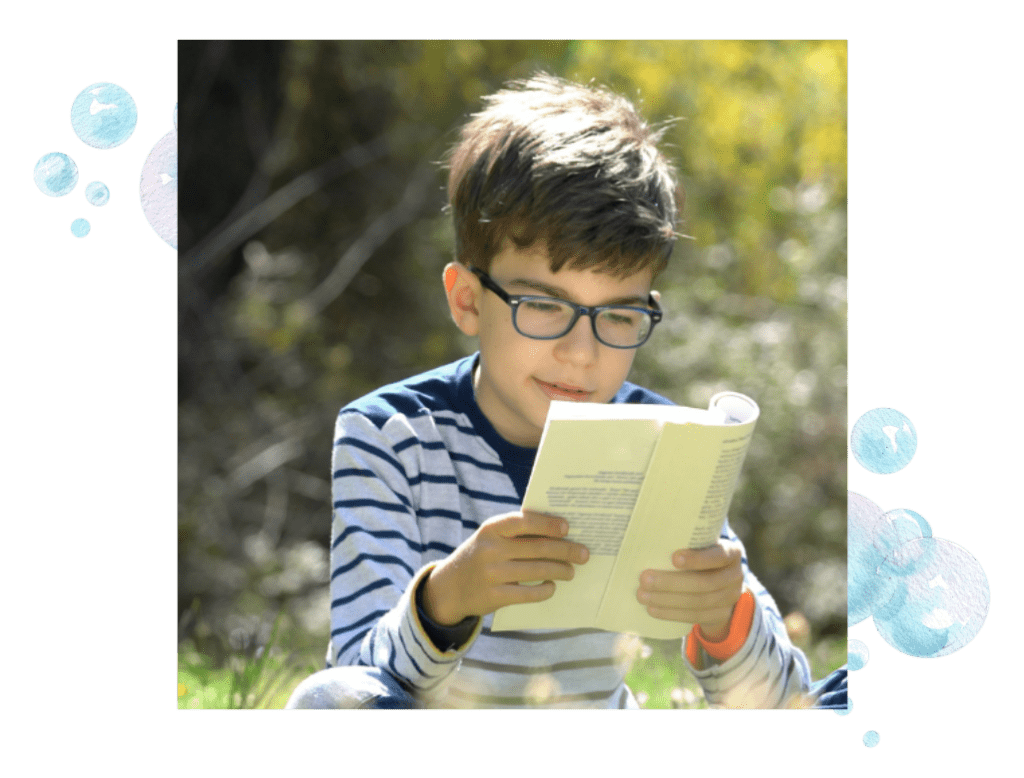
Not just letter differences will trip up a dyslexic child while reading, though. Word differences can be brutal as well. For instance, the word “bad” and “dad” are quite similar in shape, which is a way that kids with dyslexia will often look at words. Then, they will look at the letter differences and try to recall from memory what the word might be.
Obviously, this is one of The Three Pillars of Poor Reading and not a great strategy for decoding words. But if your child has strong visual discrimination skills right from the start, then it’s not so tempting to want to memorize the word, which also leads to guessing at words, another Pillar of Poor Reading.
Your child will gain visual perceptual skills, spatial skills, and the ability to discriminate between different shapes’ nuances while working through the “Seeing” for Reading Pack! This relates to better decoding and reading skills. Once your child can “perceive” correctly, learning is easier!
A Sample Page from the “Seeing” for Reading Pack
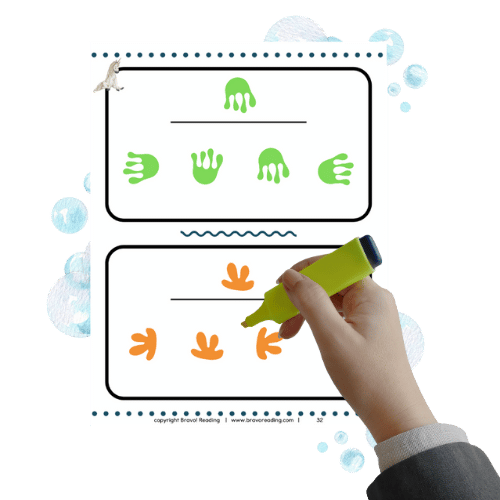

Visual Processing – Visual Perceptual Skills Tied Together With A Big Bow!
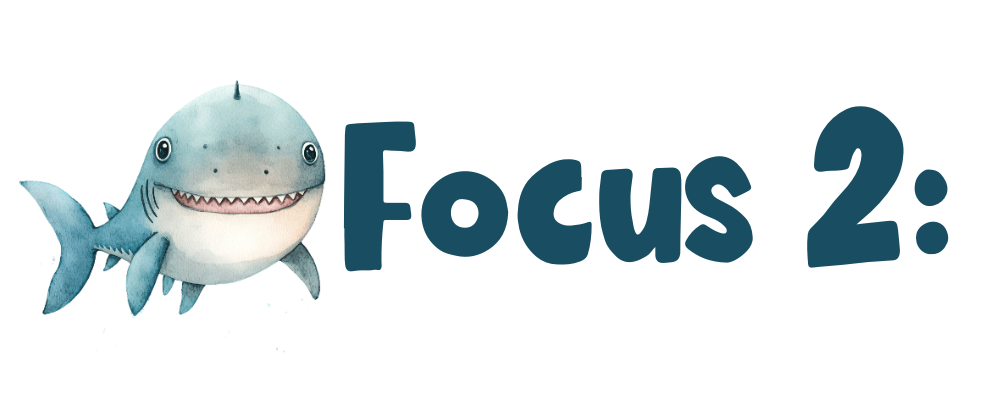
The next visual perceptual skill your child will work on is visual synthesis. This is the ability to assimilate parts of a visual image into a whole object. Visual synthesis is an especially important perceptual skill for reading, as your child must be able to make a “whole” image to form words. If your child can’t perceive that a word is a whole with meaning attached, then your child will just see bits and pieces of unrelated letters on a page. Meaning would be lost in the translation, and comprehension takes a dive.
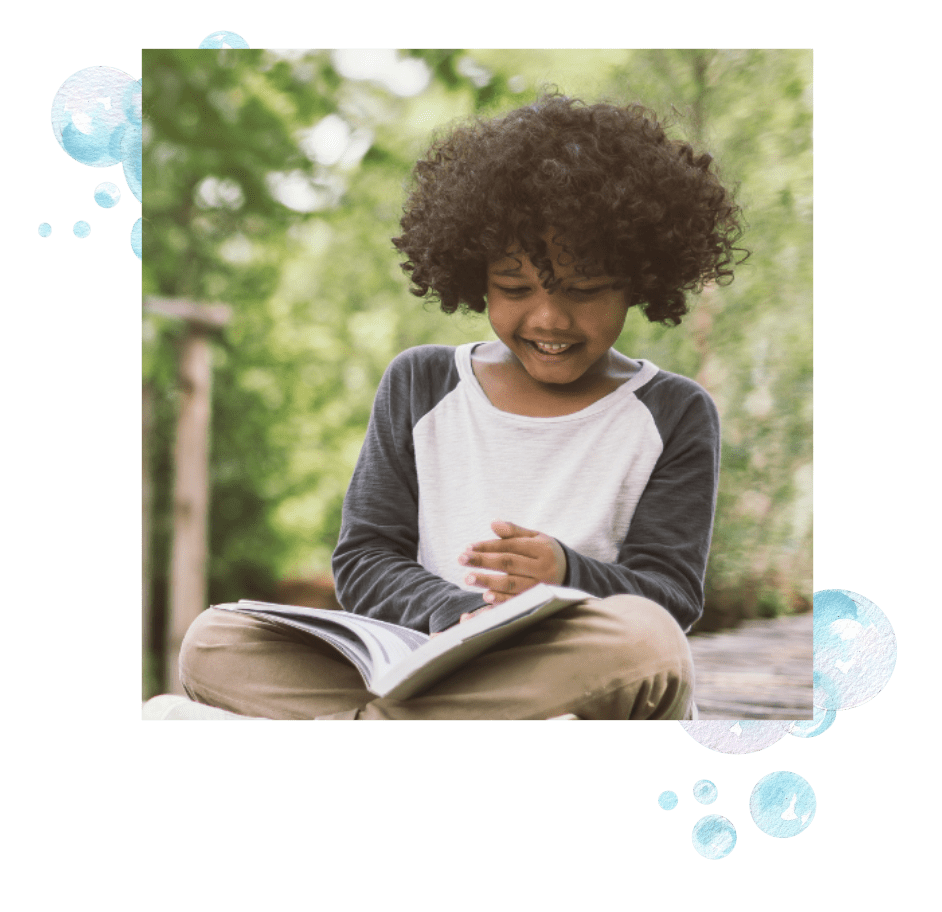
The act of synthesizing this visual information involves combining new ideas with the existing information, enabling your child to form conclusions about the text’s meaning.
It is similar to summarizing information, only not as complex.
But if your child isn’t perceiving the information correctly to start with, if the “whole” of an object can’t be seen, then the act of synthesizing and drawing conclusions from text won’t happen in a straightforward manner. This results in a visual perceptual skills problem. The Bravo! “Seeing” for Reading Pack is chock full of fun, easy exercises that make these visual perceptual issues go away.
A Sample Page from the “Seeing” for Reading Pack
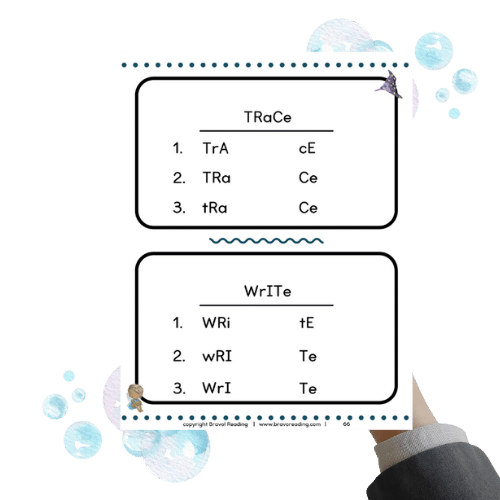
It’s Hide And Seek With Visual Perceptual Skills Like This!
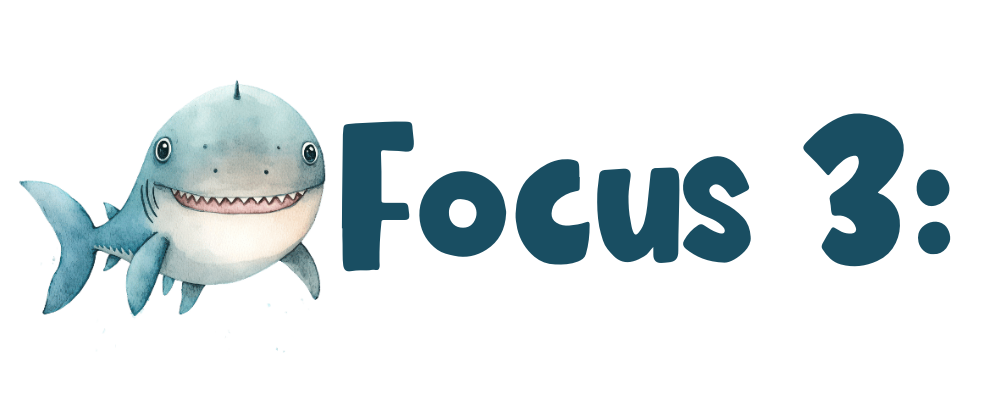
The third focus of the “Seeing” for Reading Pack is visual figure ground. This is the ability to visually differentiate between an object and its background. When reading, your child needs to be able to weed out distracting information so that decoding, fluency, and comprehension can take place.
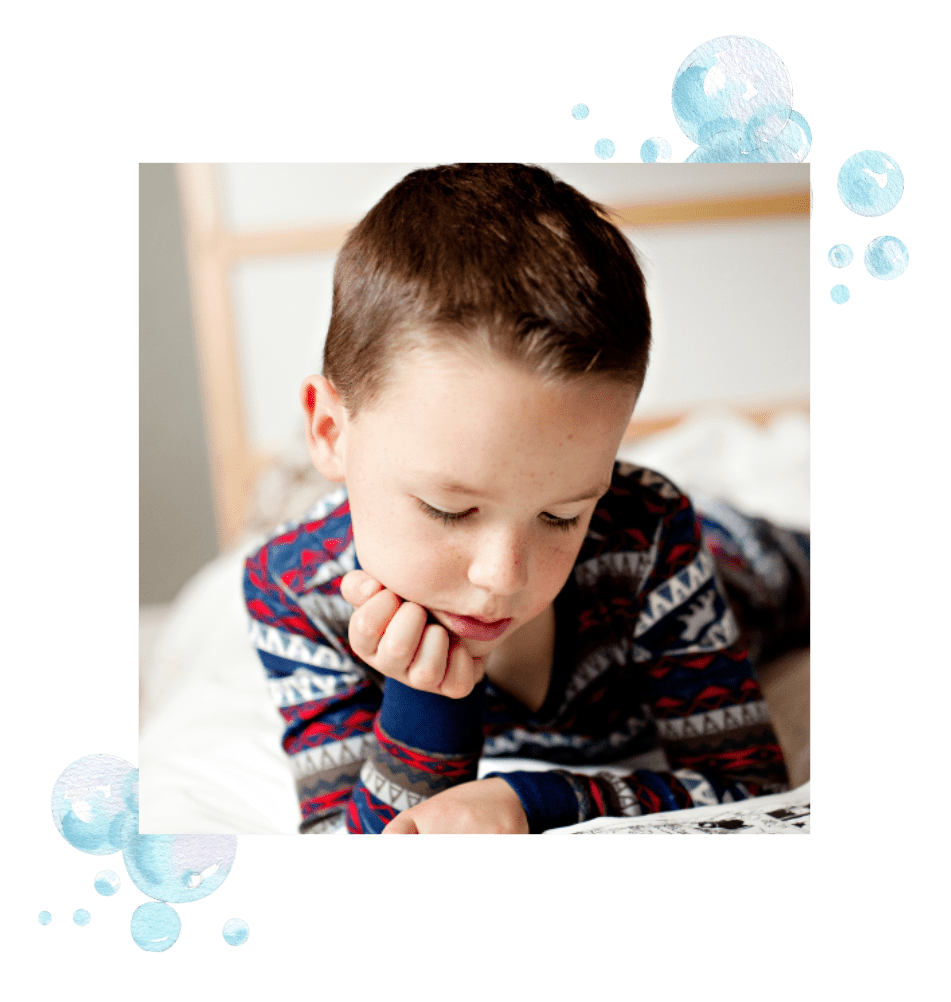
For example, there might be a smudge on the text, partially covering a letter. Your child must be able to decide what the letter is without wasting too much time, and from there, carry on with decoding the next letter in the lineup of the word.
Many other things can happen that get in the way of the letter or word your child might be decoding or sounding out.
A page might have drifted over your child’s book, there might be a misprint, or even a finger could be covering part of the word.
If your child has a visual perceptual skills problem, then this information simply can’t be filtered out. It causes a lot of frustration and results in poor reading and decoding skills.
When your child can filter out the distracting information and hone in on the important letters or words, reading becomes an easier process! Grades soar. Tests are taken with ease. Homework isn’t a battle.
A Sample Page from the “Seeing” for Reading Pack
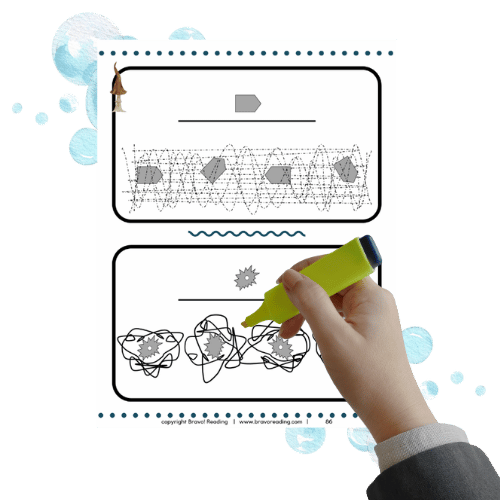

From Left To Right: Smooth Eye Tracking Is A Crucial Visual Perceptual Skill That Needs Addressed!

Did you know your child has six muscles holding each eyeball in place? Sometimes, these eye muscles can be weak or misaligned, and this affects your child’s visual perceptual skills abilities. These eye muscles can be exercised so your child’s eyes can move smoothly across a page while reading.

Smooth eye movement is crucially important to reading with speed and automaticity. Automaticity is the ability to perform a skill without conscious effort.
If your child’s eye muscles are weak, then there will be jerky stops and starts. Lines of text are missed or skipped. Words are misread because it’s too difficult trying to keep the eyes on the page. Eyes might water or your child might rub them.
The bottom line is that reading is difficult enough without having to fight keeping your eyes on the page and trying to move them smoothly across text. Your child will have fun while strengthening eye muscles with easy to do visual tracking exercises!
When your child uses a marker to track back and forth between commonly reversed and confused numbers and letters, the eyes, the brain, and the hand communicate. This transfers to not only stronger muscle movement in the eyes, but better visual motor integration and handwriting skills!
A Sample Page from the “Seeing” for Reading Pack

Making Space In The Brain: Visual Perceptual Skills Take The Cake!

The fifth visual perceptual skill your child will work on in the “Seeing” for Reading Pack is visual spatial memory. This is the ability to retain and recall an object’s identity and location in space, even when the object is no longer there.

This skill is tied in closely with visual memory, which is the brain’s ability to hold onto an image or picture after it’s gone. Visual spatial memory adds the component of where the object is “spatially”.
Spatial skills seem to elude the dyslexic leaner. These are the kids whose written answers are either extremely large or small. These kids are often sloppy and clumsy as well. This is because they struggle to know where not only objects are in space but their own bodies.
If your child is struggling in this area, any small or fine work is troublesome because it’s too difficult to judge where the objects being focused on are in space. Reading is especially troublesome for these kids because they can’t seem to perceive the letters and words in space.
These letters and words might be “floating”, have halos, show up distorted, slide uphill, slide downhill, shake, shimmer, or a host of other spatial aggravations.
When your child’s visual spatial memory skills are strong, then not only “seeing” the information (text), but recalling where it was and what it means will easily be retained. This directly relates to better reading comprehension skills, which is the end result of reading!
As your child works in the “Seeing” for Reading Pack, three shapes are mastered first. Your child looks at the shapes above the line then covers them up. After that, your child matches the shape combination from memory.
From there four and then five are mastered and held in visual memory.
A Sample Page from the “Seeing” for Reading Pack
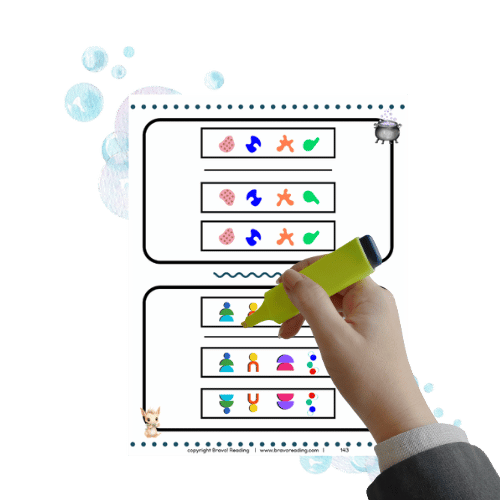
Button Up Reading And Writing For A Big Win!

Next, your child will strengthen visual motor integration skills. Visual motor integration is the ability to translate a visual image or plan into an accurate motor action. In easier terms, it’s the communication between the eyes, the brain, and the hand.

Although visual motor integration primarily affects your child’s writing skills, it’s also important for reading.
Visual perceptual skills like visual motor integration are directly related to differentiating written words, letters, and punctuation marks.
There are also spatial associations and figure-ground relations in visual motor integration activities that help your child perceive words and letters correctly while reading.
As your child uses a marker or pencil to “close up” unfinished shapes, visual motor integration and spatial skills are sharpened while using the “Seeing” for Reading Pack. This gives your child the ability to perceive symbols and shapes (letters, numbers, and words) correctly without distortions.
A Sample Page from the “Seeing” for Reading Pack
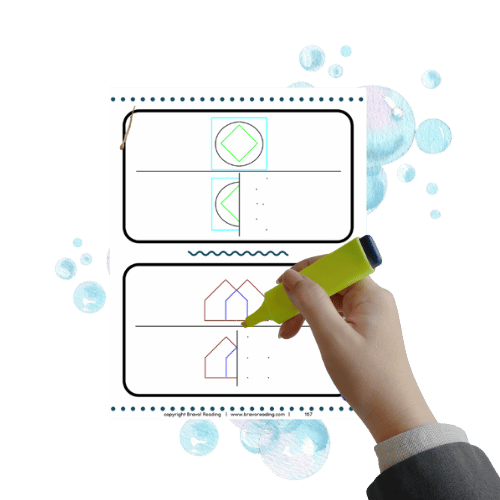

Closing The Visual Perceptual Gap In One Giant Leap!
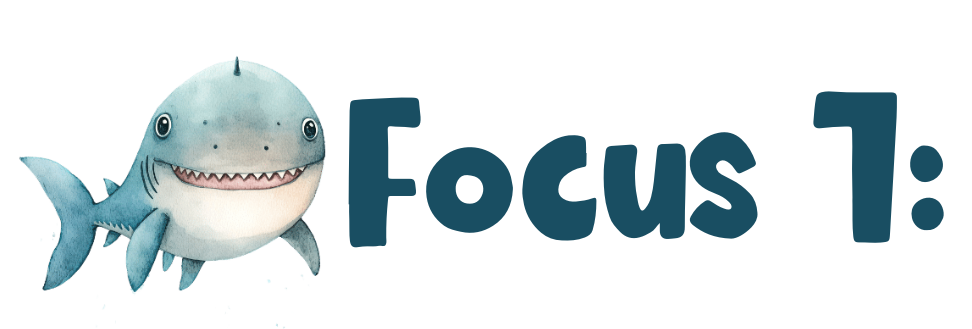
The next visual perceptual skill your child will focus on is visual closure skills. Visual closure is the ability to visualize or picture a complete whole when seeing an incomplete or partial picture. Visual closure helps your child read and comprehend information quickly.

The eyes don’t need to process each letter in each word separately in order to understand the word by sight.
It’s important that your child can make a “whole” out of an image that might not be complete. Just like with visual figure ground, the text or print might be marred, blurry, or partially covered up.
If your child has to take a long time to figure out what the incomplete figure might be, then there’s a pause. This pause is enough to affect the flow of learning.
Sometimes, after a pause like this, your child struggles to even find the page being read; the distraction is so great. Each time your child is off task, there’s a loss of learning.
Filling in visual gaps to make an image “whole” needs to be a fast, automatic process. Usually, the brain naturally fills in these gaps, but sometimes it can be a difficult process.

The Big Kahuna Of Visual Perceptual Gaps!
Think about someone’s face when you first see it. You don’t get hung up with all the details of the face – long nose, wide eyes, thin chin, etc. No, you see the face as a “whole” so you can instantly recognize it the next time you see it.

Visual closure is the same way!
Kids with dyslexia are usually weak in visual closure skills. Although they learn by seeing the “whole”, they struggle to see it in objects, figures, or symbols. They want to see each individual piece instead.
The “Seeing” for Reading Pack is chock full of visual closure exercises that start with three-letter words and works up to five-letter words.
This also helps visual memory, reading comprehension, and the ability to sound out or decode multi-syllable words.
A Sample Page from the “Seeing” for Reading Pack


Stick The Memory Glue of Visual Perceptual Skills In A Jiffy!

The last visual perceptual skill in the “Seeing” for Reading Pack focuses on visual Memory. Visual memory is the ability to immediately recall what the eyes have seen, even when the object is no longer visible.

Visual memory is one of the most important visual perceptual skills for reading. As your child reads, each letter of a word is a symbol that must be recalled, even if it’s no longer there.
Most kids with dyslexia can only recall two to three shapes in visual memory, so that means they are tapped out when they decode a three-letter word!
This is one reason why multi-syllable words are so difficult for kids with dyslexia! They simply can’t hold that many symbols in visual memory!
By the time your child is seven years old, then seven shapes should be held in visual memory, although with technology doing a lot of your child’s heavy lifting these days, we suggest working up to six figures.
Where The Magic Lives: Seven Figures In Visual Memory!
Most codes sent these days have six digits yet license plates and phone numbers (created a long time ago) are seven digits.
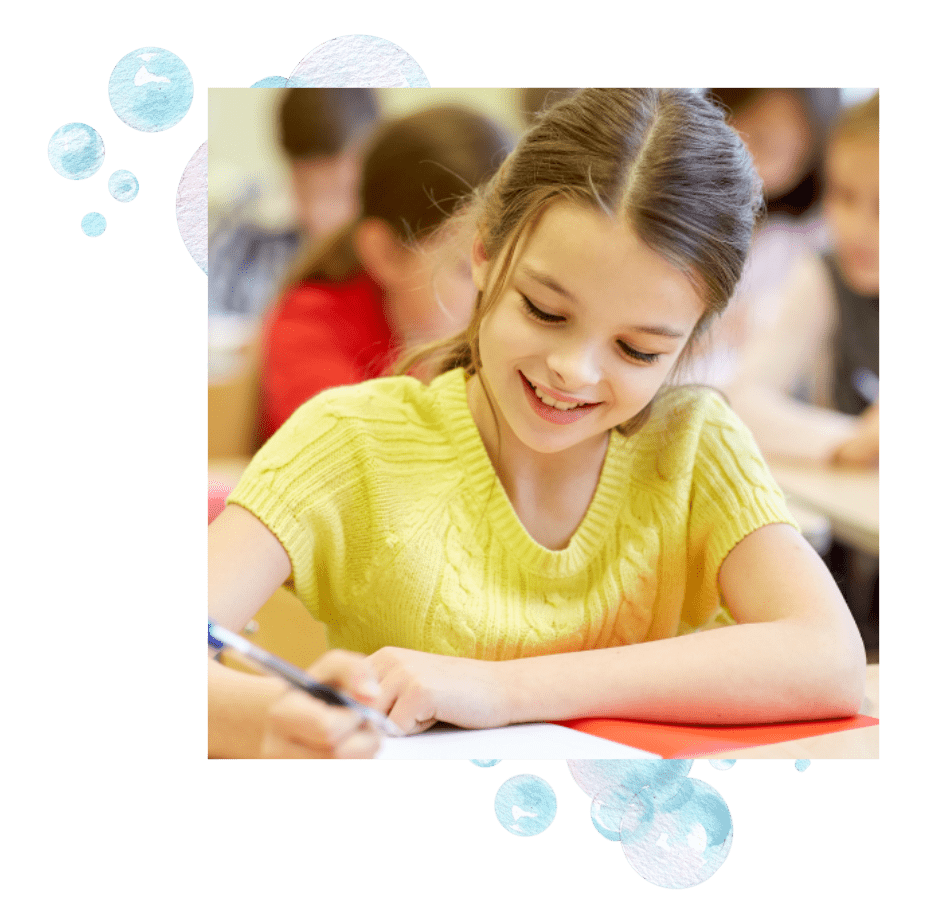
If your child is weak in visual memory, there’s no need to worry. Visual memory is a skill like riding a bike or playing basketball. By starting with three shapes then slowly building up to longer shapes, figures, and objects to hold in visual memory, your child can develop this skill…quickly and easily!
In the “Seeing” for Reading Pack, your child will look at a series of colorful arrows, cover them up, then replicate the arrows on a blank space. When finished will all sets of arrows, your child goes back and pays attention to color. Finally, your child will draw the arrows backward…completely from memory!
Engaging in Directionality Takes Your Child in the Right Direction!
The “Seeing” for Reading arrows activity is also excellent for helping your child gain directionality skills. These are directions like up, down, left, and right that most kids with dyslexia struggle with.
The “Seeing” for Reading Pack develops your child’s visual memory abilities in fun ways, starting with three symbols and working up to five. This equates to your child having the ability to sound out a five-letter word when finished!
Amazing!
A Sample Page from the “Seeing” for Reading Pack
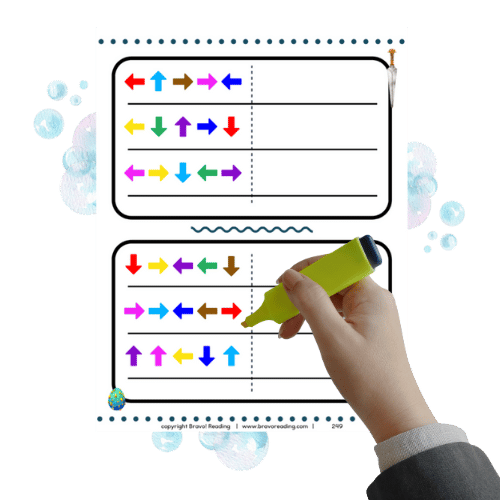


The Bravo! Money Back Guarantee
Bravo! Reading knows what it’s like to have a child with dyslexia. After all, Lisa Harp, the founder of Bravo! Reading originally developed this reading program to help her own son who had dyslexia. Within a year, he was an honor student!
Lisa brings this same methods to you so you can help your child. Whether you work with your child, hire a tutor to do so, or have a family member help out, we know the cost of not doing anything.When your child struggles to read, the world is bleak. When reading skills fall into place, a magical world opens up.
We also know the cost of panic decisions, and we know that Bravo! is a confidence decision.
Reading is a serious subject: Bravo! Makes It Fun!

Turning Tears To Sunshine The Bravo! Way
Bravo! Reading knows what it’s like to have tears instead of sunshine, fits instead of smiles. Books thrown aside and Kindles ignored. Bravo! knows what it’s like to have a child avoid reading at all costs, and we’ve gone the extra mile to fix that problem for you and your child.
That’s Why We Offer A Money Back Guarantee.
If you aren’t happy with the Bravo! Reading Program, just let us know and we’ll happily refund your money, no questions asked.



